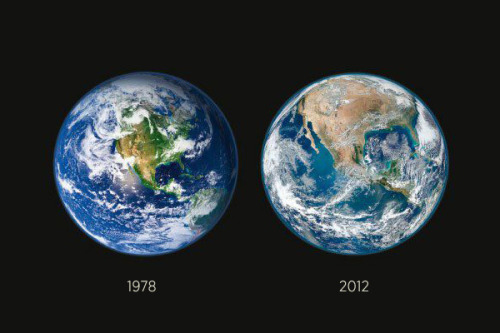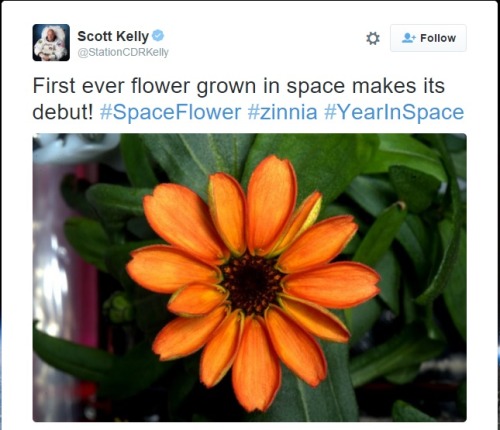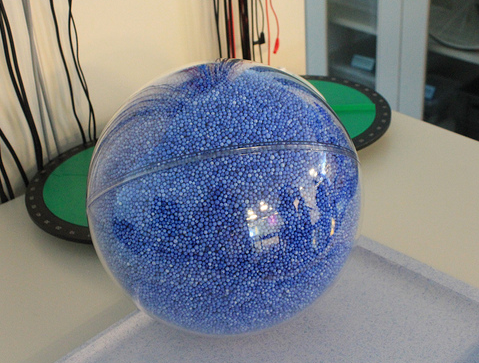The Space Shuttle Columbia

The Space Shuttle Columbia
Pause today to remember the Crew of STS-107, who all died on this day 13 years ago, February 1, 2003, when the Space Shuttle Columbia became unstable and disintegrated on re-entry over Texas. The Crew:
The Flight Commander was Rick D. Husband, a U.S. Air Force colonel and mechanical engineer, who piloted a previous shuttle during the first docking with the International Space Station on STS-96.
The Pilot was William C. McCool, a 1983 graduate of the United States Naval Academy in Annapolis, Maryland and U.S. Navy commander.
The Payload Commander was Michael P. Anderson, a U.S. Air Force lieutenant colonel. He was also a physicist and mission specialist who was in charge of the science mission.
The Payload Specialist Ilan Ramon was a colonel in the Israeli Air Force and the first Israeli astronaut.
The Mission Specialist was Kalpana Chawla, an Indian-born aerospace engineer who was on her second space mission. She was the first Indian woman in space.
The Mission Specialist was David M. Brown, a U.S. Navy captain trained as an aviator and flight surgeon.
The Mission Specialist was Laurel Blair Salton Clark, a U.S. Navy captain and flight surgeon. Clark worked on biological experiments.
The Space Shuttle Columbia was named after the poetic designation for the United States of America. This poetic name (based on Christopher Columbus, thought then as the sole discoverer of America) was meant to be both inclusive and a little bit nostalgic, in the sense that America could be embodied in a name. Clearly these seven astronauts and mission specialists embodied the best spirit of America, the inclusion of an Indian and Israeli the strongest symbol yet of what America can accomplish when unified to a common purpose. Special thought to William McCool, graduate of the USNA-I pass almost daily the ‘McCool Marker’, a memorial on the grounds of the USNA golf course to celebrate his achievements both as a Naval Aviator but also his accomplishments as a Midshipman, where he served as Captian of the Cross Country team his senior year. The marker is placed on the cross country course 16 minutes from the finish line of his fastest run on the Navy course.
More Posts from Alitheastronomer and Others










Striking views of our Solar System
Otherworlds: Visions of our Solar System can be seen at the Natural History Museum, London, from 22 January - 15 May 2016.
All credits on the link above

A wanderer dancing the dance of stars and space - the barred spiral galaxy NGC 1097
js

Jupiters Great Red Spot is likely a sunburn, not a blush. New science from NASAs Cassini Mission to Saturn based on lab and flyby data.
js




This is a model of how many Earth’s can fit inside the sun.
The Hubble Space telescope just sent back a new photo of the Twin Jet Nebula. Here’s what it looked like in 1997:

And now …

Whoa. But wait, we also got an updated image of the merging galaxies NGC 6240. What it looked like in 2008:

And today:

Science, you’re the best. Oh, and the explanation behind those merging galaxies and their black holes is wild.
Coppery reds of upcoming lunar eclipse may be accented with turquoise
Washington (UPI) Oct 1, 2014 Next Wednesday, Oct. 8, the full moon will turn a coppery red as a lunar eclipse becomes visible across the entirety of the United States. “It promises to be a stunning sight, even from the most light polluted cities,” Fred Espenak, NASA’s resident eclipse expert, said in a recent press release. “I encourage everyone, especially families with curious children, to go out and enjoy the ev Full article

the most optimistic letter that any human has ever written
-
 angelinwhites liked this · 6 years ago
angelinwhites liked this · 6 years ago -
 moritzzzstiefel liked this · 6 years ago
moritzzzstiefel liked this · 6 years ago -
 zodiaciller liked this · 6 years ago
zodiaciller liked this · 6 years ago -
 owlcapon3 liked this · 6 years ago
owlcapon3 liked this · 6 years ago -
 eros-military-bujutsu reblogged this · 7 years ago
eros-military-bujutsu reblogged this · 7 years ago -
 wannabegof liked this · 8 years ago
wannabegof liked this · 8 years ago -
 honeybeedobee liked this · 9 years ago
honeybeedobee liked this · 9 years ago -
 oma-goodness reblogged this · 9 years ago
oma-goodness reblogged this · 9 years ago -
 lemmewhisperinyaear liked this · 9 years ago
lemmewhisperinyaear liked this · 9 years ago -
 pyromaniac762-blog liked this · 9 years ago
pyromaniac762-blog liked this · 9 years ago -
 jordanush liked this · 9 years ago
jordanush liked this · 9 years ago -
 mysterysciencegirlfriend3000 reblogged this · 9 years ago
mysterysciencegirlfriend3000 reblogged this · 9 years ago -
 agnt-romanov reblogged this · 9 years ago
agnt-romanov reblogged this · 9 years ago -
 xsadvboyx reblogged this · 9 years ago
xsadvboyx reblogged this · 9 years ago -
 shasake reblogged this · 9 years ago
shasake reblogged this · 9 years ago -
 zar-1 liked this · 9 years ago
zar-1 liked this · 9 years ago -
 thorretriever-blog liked this · 9 years ago
thorretriever-blog liked this · 9 years ago -
 allpreciousjewel liked this · 9 years ago
allpreciousjewel liked this · 9 years ago -
 thefourteenthdoctorr liked this · 9 years ago
thefourteenthdoctorr liked this · 9 years ago -
 laranjeira-faze-blog liked this · 9 years ago
laranjeira-faze-blog liked this · 9 years ago -
 decadentcreationpirate-blog liked this · 9 years ago
decadentcreationpirate-blog liked this · 9 years ago -
 lubna1-blog1 liked this · 9 years ago
lubna1-blog1 liked this · 9 years ago -
 marloneterminator reblogged this · 9 years ago
marloneterminator reblogged this · 9 years ago -
 marloneterminator liked this · 9 years ago
marloneterminator liked this · 9 years ago -
 frieddeerthing-blog liked this · 9 years ago
frieddeerthing-blog liked this · 9 years ago -
 nigdalb-blog liked this · 9 years ago
nigdalb-blog liked this · 9 years ago -
 mightylogistics-blog reblogged this · 9 years ago
mightylogistics-blog reblogged this · 9 years ago -
 mightylogistics-blog liked this · 9 years ago
mightylogistics-blog liked this · 9 years ago -
 scoaladebiliard-blog liked this · 9 years ago
scoaladebiliard-blog liked this · 9 years ago -
 myprincegold-blog liked this · 9 years ago
myprincegold-blog liked this · 9 years ago -
 acidifica-me-blog liked this · 9 years ago
acidifica-me-blog liked this · 9 years ago -
 furryfantheorist-blog liked this · 9 years ago
furryfantheorist-blog liked this · 9 years ago -
 vlar2016-blog liked this · 9 years ago
vlar2016-blog liked this · 9 years ago -
 tremikaeowens-blog reblogged this · 9 years ago
tremikaeowens-blog reblogged this · 9 years ago -
 cheesy-weesy liked this · 9 years ago
cheesy-weesy liked this · 9 years ago -
 superkeddy-blog liked this · 9 years ago
superkeddy-blog liked this · 9 years ago -
 annmi-mimi-blog liked this · 9 years ago
annmi-mimi-blog liked this · 9 years ago -
 bagelzman-blog liked this · 9 years ago
bagelzman-blog liked this · 9 years ago -
 doctorvon-chunk-a-funk-blog reblogged this · 9 years ago
doctorvon-chunk-a-funk-blog reblogged this · 9 years ago -
 doctorvon-chunk-a-funk-blog liked this · 9 years ago
doctorvon-chunk-a-funk-blog liked this · 9 years ago -
 minicraft90-blog liked this · 9 years ago
minicraft90-blog liked this · 9 years ago